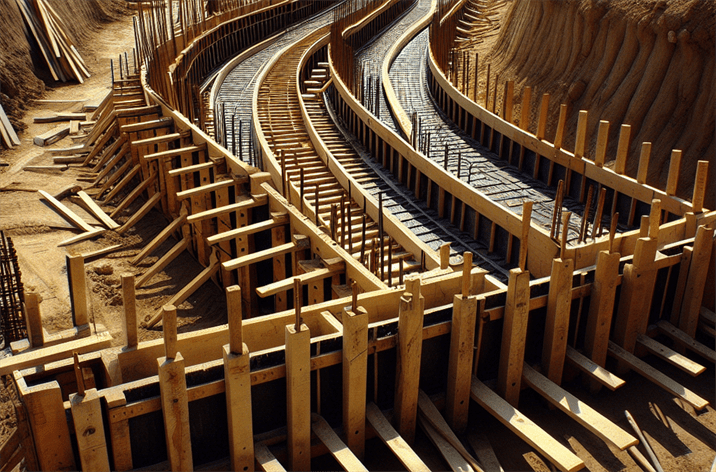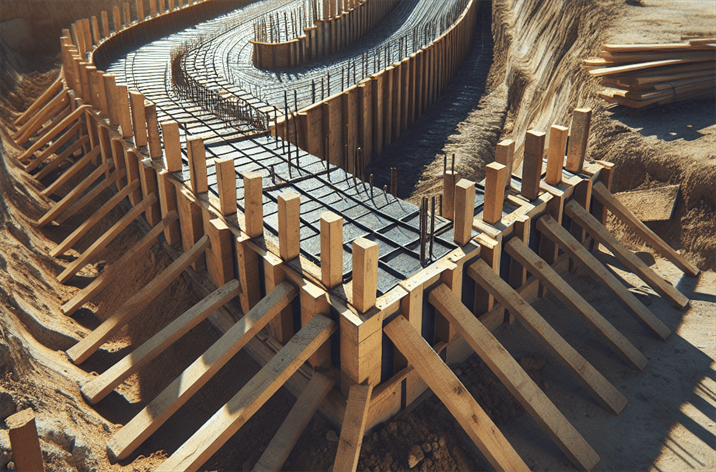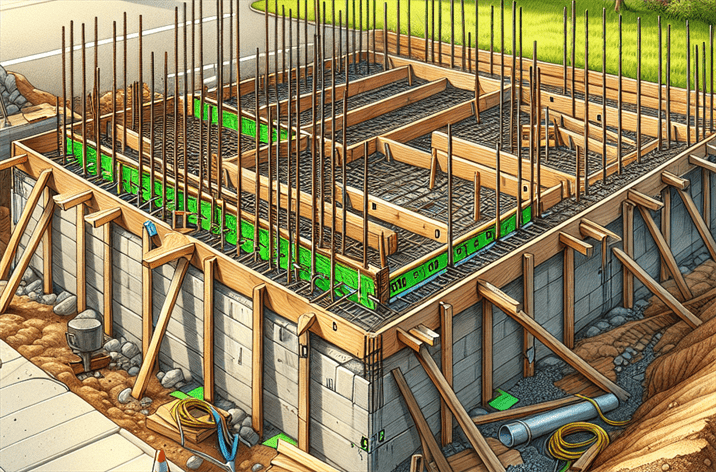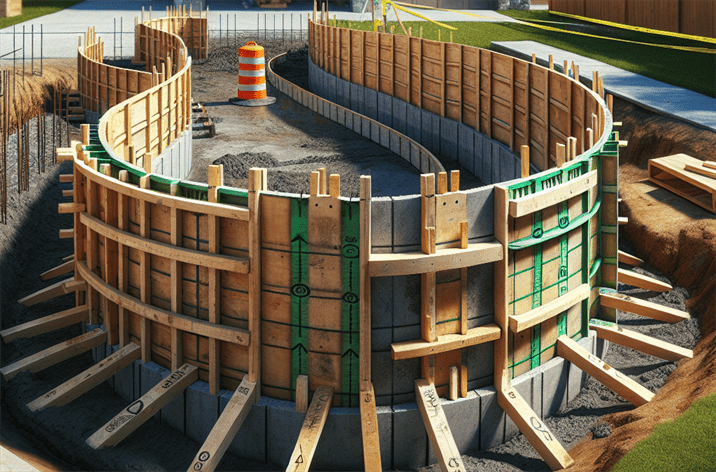The Benefits of Using Wooden Survey Stakes in Construction
Introduction
Did you know that using wooden survey stakes in construction has been a time-tested practice, playing a vital role in the industry for generations? These simple yet reliable tools have long been used to lay the foundation for buildings, roads, and other infrastructure. While construction methods continue to evolve, the use of wooden stakes remains indispensable, especially as sustainability and precision become increasingly important.
In recent years, the push for eco-friendly construction practices has gained momentum. Wooden survey stakes fit seamlessly into this trend, offering a biodegradable alternative to plastic and metal stakes, which often contribute to environmental waste. By opting for wooden stakes, construction projects not only embrace sustainable practices but also benefit from enhanced accuracy and efficiency.
In this article, we will explore the numerous advantages of using wooden survey stakes in construction, examine their practical applications, and discuss the challenges that come with their use. Whether you’re an experienced contractor or a DIY enthusiast, understanding the importance of these tools can greatly benefit your construction projects.
For more insights on construction materials, check out our guide on affordable stakes and lath for construction needs.
What are the Benefits of Using Wooden Survey Stakes in Construction?
Definition of Wooden Survey Stakes
Wooden survey stakes are pointed wooden rods used to mark specific locations or boundaries on a construction site. They come in various lengths and sizes, typically made from treated wood to enhance durability. Their primary purpose is to serve as markers for layout, grading, and alignment during construction processes.
Historical Context
The use of wooden stakes dates back to ancient civilizations, where they were employed in surveying and land demarcation. Over time, the designs and materials have evolved, but the fundamental purpose remains unchanged. Today, wooden survey stakes are still widely used in various applications, from residential construction to large-scale infrastructure projects.
The Importance of Wooden Survey Stakes
In recent years, there has been a renewed interest in wooden survey stakes due to their sustainability and efficacy. As construction projects increasingly prioritize eco-friendly materials, wooden stakes emerge as a viable option. They are not only biodegradable but also provide a natural aesthetic that blends well with many environments.
Moreover, wooden stakes are recognized for their cost-effectiveness. When properly maintained, they can withstand the rigors of construction sites, making them a practical choice for architects and builders alike.
Wooden Survey Stakes in the Context of Construction
Wooden survey stakes play an integral role in various construction processes. They are commonly used for:
- Site Layout: Establishing the boundaries and layout of the construction site.
- Grading: Marking levels for excavation and grading work.
- Alignment: Assisting in the alignment of structures, ensuring everything is positioned correctly.
Key Players or Contributors
Several companies and organizations have pioneered the use of wooden survey stakes, promoting innovations in design and manufacturing. These efforts have contributed to the wider acceptance and use of wooden stakes in modern construction.
For more on construction techniques, visit our page on best practices for using stakes and lath in construction.

How Do Wooden Survey Stakes Work?
Practical Applications
Understanding how to effectively use wooden survey stakes can enhance the efficiency of any construction project. Here’s a step-by-step guide on their practical applications:
- Selecting the Right Stakes: Choose stakes that are appropriate for your project. Consider the length, diameter, and type of wood. Treated wood is often preferred for its durability.
- Marking the Layout: Use the stakes to outline the project area. Drive them into the ground at key points to establish corners and boundaries.
- Aligning Structures: For alignment, place stakes at intervals along the layout. This helps ensure that walls, foundations, and other structures are straight and properly positioned.
- Grading and Excavation: Wooden stakes can be used to indicate height levels for grading. Attach string or wire to the stakes to create a reference line for excavation.
- Adjusting as Needed: As construction progresses, you may need to reposition stakes. Ensure they remain visible and correctly indicate the intended layout.
Benefits of Using Wooden Survey Stakes
- Cost-Effectiveness: Wooden stakes are generally more affordable than their metal or plastic counterparts, making them accessible for various projects.
- Sustainability: Being biodegradable, wooden stakes minimize environmental impact compared to synthetic materials.
- Versatility: They can be used in multiple applications, from residential landscaping to large-scale construction.
- Ease of Use: Wooden stakes are lightweight and easy to handle, allowing for quick setup and adjustments on site.
Learn more about effective surveying methods in our article on how to use construction alignment stakes for perfect layouts.
Benefits of Using Wooden Survey Stakes in Construction
Eco-Friendly Construction
The construction industry is undergoing a transformation, with a strong emphasis on sustainability. Using wooden survey stakes aligns with this trend, allowing builders to minimize their carbon footprint. Unlike plastic or metal options, wooden stakes can decompose naturally, making them an environmentally responsible choice.
Improved Project Accuracy
Accuracy in construction is critical. Wooden survey stakes provide clear visual markers that help ensure precision in layout and measurements. This clarity reduces the likelihood of costly errors, ultimately saving time and resources.
Durability and Longevity
While some may question the durability of wooden stakes, treated wood options are designed to withstand the elements. When properly maintained, these stakes can last through multiple projects, proving to be a worthwhile investment.
Cost-Effectiveness
As mentioned earlier, wooden stakes are often more affordable than other materials. This cost-effectiveness makes them an attractive option for both small-scale projects and larger construction sites.
Flexibility in Use
Wooden stakes are versatile and can be adapted to various construction needs. Whether marking boundaries, guiding excavation, or setting up temporary structures, they can fulfill multiple roles efficiently.
Challenges and Considerations
While there are numerous benefits, it’s crucial to acknowledge some challenges associated with using wooden survey stakes:
- Weather Sensitivity: While treated stakes are relatively durable, extreme weather conditions can still affect their longevity.
- Potential for Warping: Wooden stakes may warp over time, especially if exposed to moisture, which can impact accuracy.
- Maintenance Needs: Regular checks are necessary to ensure stakes remain in good condition throughout the project duration.
Future Trends in Using Wooden Survey Stakes in Construction
As the demand for sustainable construction practices continues to rise, wooden survey stakes are likely to see increased innovation in their design and use. Here are some potential future trends:
- Enhanced Treatment Processes: Advances in wood treatment technology may lead to more durable stakes that resist weather-related damage better.
- Integration with Technology: Combining traditional wooden stakes with modern technology, such as GPS and digital surveying tools, could enhance accuracy.
- Recyclability Programs: As sustainability becomes more prominent, manufacturers may implement recycling programs for wooden stakes to further reduce waste.
The construction industry is evolving, and so is the role of wooden survey stakes. Embracing these changes will ensure that construction projects remain efficient and environmentally responsible.
Conclusion
In conclusion, wooden survey stakes are a timeless and essential tool in the construction industry. Their eco-friendliness, cost-effectiveness, and versatility make them a preferred choice for many builders and contractors. By understanding their benefits and applications, you can leverage wooden stakes to improve accuracy and efficiency on your construction projects.
As we move toward a more sustainable future, the value of using wooden survey stakes will only continue to grow. Whether you’re marking boundaries, aligning structures, or guiding excavation, these simple tools can play a vital role in your construction success.
To explore more about the benefits and best practices for using stakes in construction, consider checking out our guide on the essential role of surveying stakes in construction projects.
By incorporating wooden survey stakes into your toolkit, you’ll not only enhance your project’s precision and efficiency but also contribute to a greener construction industry.
Resource Links:
1. Wooden Stake Co. – Discusses the advantages of wooden survey stakes, including cost-effectiveness and environmental benefits.
2. Construction Dive – Analyzes the durability and reliability of wooden stakes in various construction projects.
3. Green Building Advisor – Explores the sustainability of wooden materials and their role in modern construction practices.













